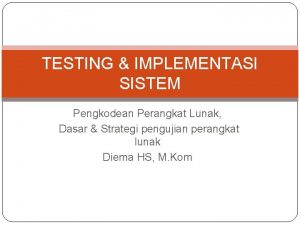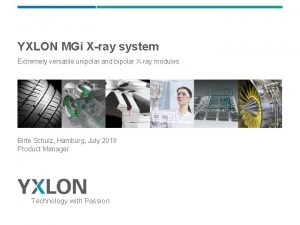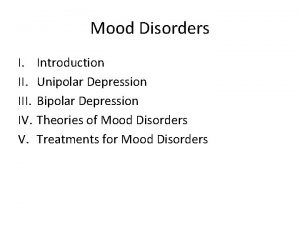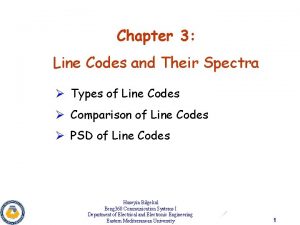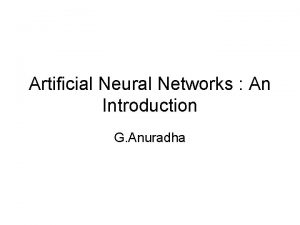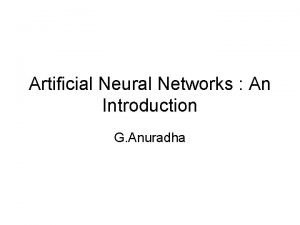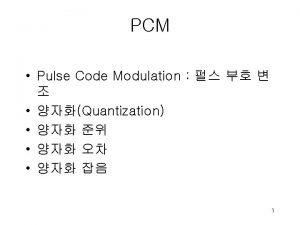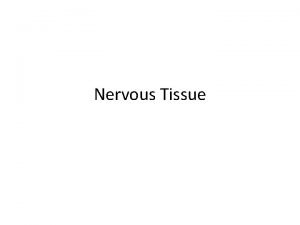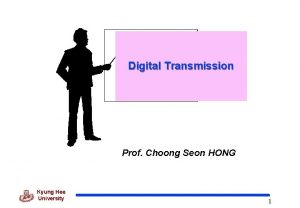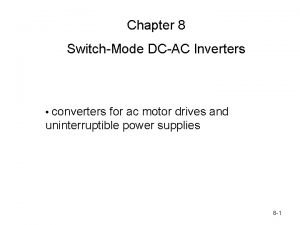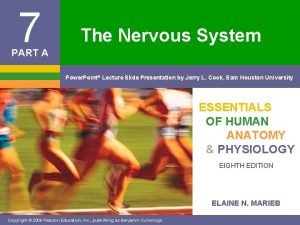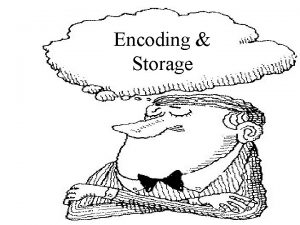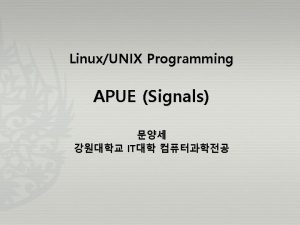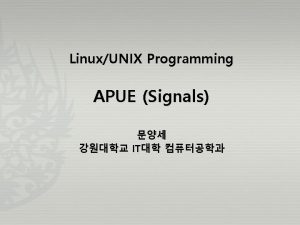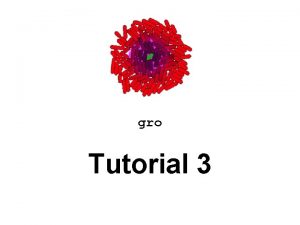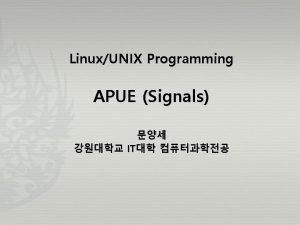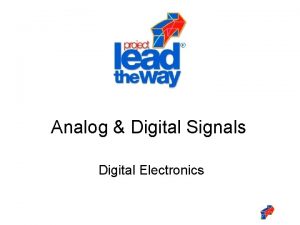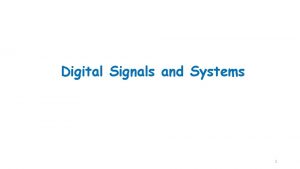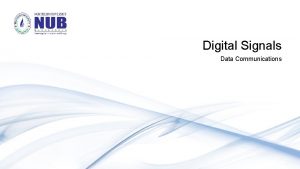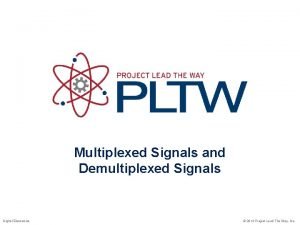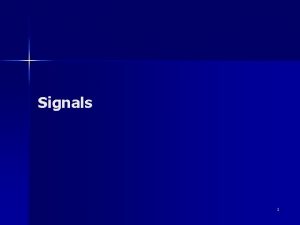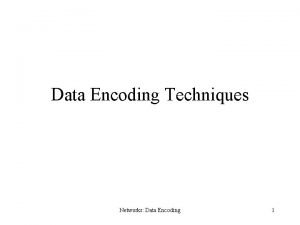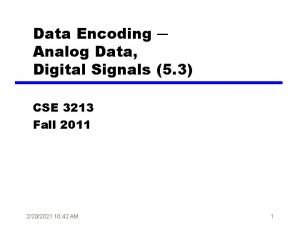Digital Signals and Digital Encoding Digital Encoding unipolar
















- Slides: 16

Digital Signals and Digital Encoding

Digital Encoding • unipolar digital signal – high = +v – low = 0 • bipolar digital signal – high = +v – low = -v • time period – duration of signal • NRZ – non return to zero

Manchester • Manchester encoding – the transitions & direction of matter – up(1) – down (0) • Differential Manchester encoding – the presence (1) – or absence (0) of transition matters

Synchronizing • synchronous transmission – reference signal used for timing • asynchronous transmission – no reference signal is used – special pattern of bits used • indicate beginning/end of frames • bit stuffing – what if the special pattern is part of data? – Insert a bit to avoid pattern, ignore bit

Data Packaging and Transmission • Segments / packets hold chunks of the intended message. • Info is added to aid re-assembly • Why segment?

Parity Checking • extra bit is added to ensure significant bits are (odd/even) –Odd Parity –Even Parity

Cyclic Redundancy Checks (CRC) • CRC codes offer better parity check analysis

Segmentation and Encapsulation • Segment, frame, data-gram, protocol data-unit (PDU) packet –blocks of data

Connection-Oriented and Connectionless Communications • Connection oriented communications – connection established then data sent – connection may "reserve" channel • Connectionless communications – data is sent without establishing a connection

Circuit Switching / Packet Switching • Circuit Switching – permanent connection established between two points for communication • Packet Switching – no permanent connection established between two points for communication – each packet switched independently • virtual circuit

Routing • Packet Routing - each packet routed independently • Message Routing - all packets of a communique routed the same

Data Codes • ASCII – originally a 7 bit code • BCD/EBCDIC – IBM Mainframe - COBOL • Unicode – 16 bit extended ASCII includes Cherokee, Mongolian, Hebrew, Latin, Klingon, etc. . . • HTML – Color Codes - Hexadecimal

Protocol Frame Structures • UDP • Ethernet

UDP Frame Structure • User Datagram Protocol 4 bit header and data • Simple header – – source port – destination port – Length – Checksum • 16 bit 1's Complement

Ethernet Frame Structure • evolving • Xerox 1970 developed first iteration • IEEE 1985 802. 3 CSMA/CD • Ethernet SNAP and Ethernet II

Common Structure • • • Preamble 64 bits Destination Address 48 bits Source Address 48 bits Type/Length 16 bits Data 368 - 12000 bits (1500 B) • Frame Check Sequence 32 bits
 Communicative signals and informative signals
Communicative signals and informative signals Language
Language Communicative signals and informative signals
Communicative signals and informative signals Basic coding test
Basic coding test Data encoding techniques in computer networks
Data encoding techniques in computer networks Digital data digital signals
Digital data digital signals Digital data digital signals
Digital data digital signals Yxlon xray
Yxlon xray Unipolar disorder
Unipolar disorder Psd of unipolar nrz
Psd of unipolar nrz Hebbian learning rule
Hebbian learning rule Unipolar continuous activation function
Unipolar continuous activation function Puls0
Puls0 Unipolar neurons are found in
Unipolar neurons are found in Unipolar
Unipolar Dcac converters
Dcac converters Unipolar neurons are found in
Unipolar neurons are found in



